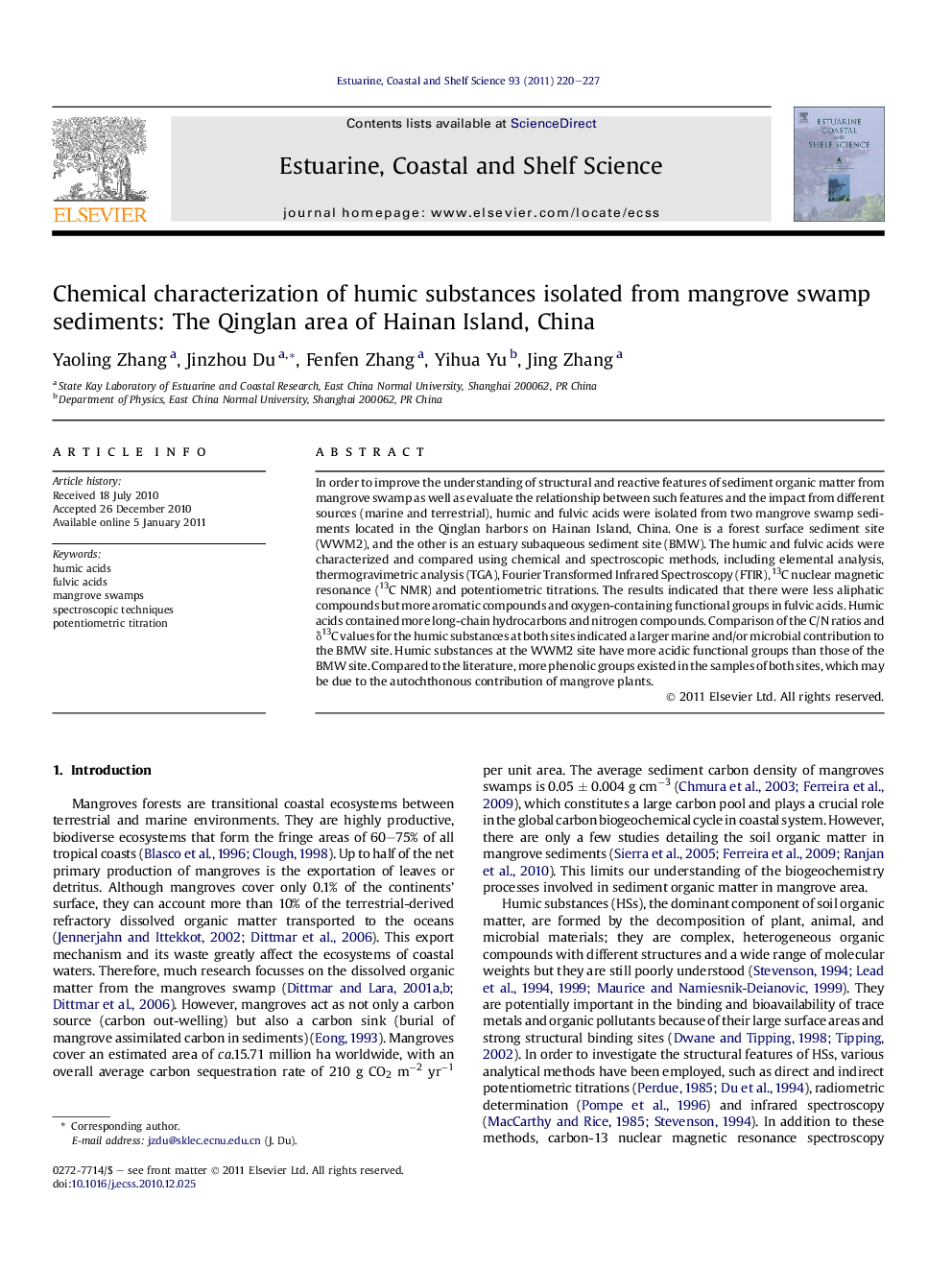| Article ID | Journal | Published Year | Pages | File Type |
|---|---|---|---|---|
| 4540448 | Estuarine, Coastal and Shelf Science | 2011 | 8 Pages |
In order to improve the understanding of structural and reactive features of sediment organic matter from mangrove swamp as well as evaluate the relationship between such features and the impact from different sources (marine and terrestrial), humic and fulvic acids were isolated from two mangrove swamp sediments located in the Qinglan harbors on Hainan Island, China. One is a forest surface sediment site (WWM2), and the other is an estuary subaqueous sediment site (BMW). The humic and fulvic acids were characterized and compared using chemical and spectroscopic methods, including elemental analysis, thermogravimetric analysis (TGA), Fourier Transformed Infrared Spectroscopy (FTIR), 13C nuclear magnetic resonance (13C NMR) and potentiometric titrations. The results indicated that there were less aliphatic compounds but more aromatic compounds and oxygen-containing functional groups in fulvic acids. Humic acids contained more long-chain hydrocarbons and nitrogen compounds. Comparison of the C/N ratios and δ13C values for the humic substances at both sites indicated a larger marine and/or microbial contribution to the BMW site. Humic substances at the WWM2 site have more acidic functional groups than those of the BMW site. Compared to the literature, more phenolic groups existed in the samples of both sites, which may be due to the autochthonous contribution of mangrove plants.
► There was obviously impact on HSs from marine ward in both sites (BMW and WWM2). ► HSs isolated from BMW have stronger marine and/or microbial signals than WWM2. ► Fulvic acids contained less aliphatic and more aromatic components in both sites. ► More long-chain hydrocarbons and nitrogen compounds existed in humic acids. ► HSs in WWM2 had more acidic functional groups than those in BMW.
